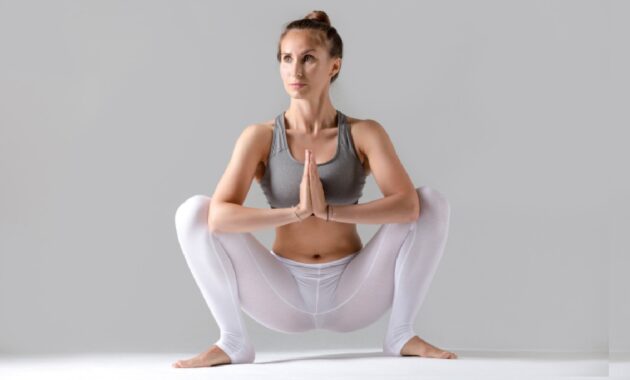Asian squats involve deep squatting. These squats can make legs stronger and have many health benefits. Know how to do Asian squats.
Squats are often included in a fitness regime as they can strengthen the lower body along with core muscles. They can also improve posture and flexibility. While there are many variations of squats, one type that has become popular is the Asian squat. It is basically a deep squatting position in which the soles of the person doing it are flat on the ground. In India and in several Asian countries, deep squatting is not just an exercise. People often rest, eat or play in a squatting position. Clearly, it is easy for many, but not everybody can do the Asian squat. But you can try the Asian squat to strengthen your legs and for more health benefits.
What are Asian squats?
Asian squats involve deep squatting, with hips way lower than knees and heels flat on the ground. This pose, in which hamstrings often touch the calves, represents a common resting posture in many Asian cultures, says fitness expert Varun Rattan. It may also be referred to as the Malasana in yoga.

How are Asian squats different from regular squats?
In case of regular squats, the hips reach parallel to the ground. On the other hand, hips are even lower than knees in Asian squats. So, the key difference lies in squat depth.
How do Asian squats help strengthen legs?
Their broader range of motion engages various leg muscles, including glutes, quadriceps, calves, and hip stabilizers. They can improve flexibility and potentially help with pain management when performed with proper form, says the expert. But consulting a doctor is crucial if you have leg pain and want to do Asian squats.
What are the health benefits of Asian squats?
Asian squats are not only good for legs, but offer more benefits. Here are some of them:
Also Read

- Improve posture
- Help with tighter calves
- Reduce pressure on bones and joints
But individuals with knee, hip, or ankle injuries, as well as pregnant women, should consult a doctor before attempting Asian squats due to potential joint stress.
How to do Asian squats?
People often make mistakes like rounding their back, lifting their heels, letting their knees collapse inward while doing the Asian squat. Focus on proper form, and gradually increase depth as your flexibility improves, suggests Rattan.
Here’s how to do an Asian squat:
- Start by standing comfortably.
- Lower yourself into a deep squat with heels flat on the ground.
- Maintain an upright chest and avoid rounding your back.
- Hold for a few seconds before standing back up then repeat for desired repetitions.
If you have never done the Asian squat before, you can try doing it by standing straight against a wall.
- Keep your back facing the wall and the back of your heel five to six inches from the wall.
- Your hands should be kept against the wall so that you get support. Keep your body perpendicular to the floor, with your feet shoulder-width apart.
- As you feel balanced with your hands on the wall, slowly go into the squat position. Stop if you feel pain in your calves or ankles.

Why can’t I do the Asian squat?
Not all people can do the Asian squat due to balance or stability issues. A 2009 study published in the Journal of Physical Therapy Science found that ankle dorsiflexion flexibility and body weight were significantly associated with the ability to perform the deep squatting position.
Asian squats necessitate greater ankle and hip mobility, making them more challenging, shares Rattan.
Even though it looks challenging, you should try the Asian squat if you don’t have knee problems!
#Asian #Squats #Benefits #Risks
